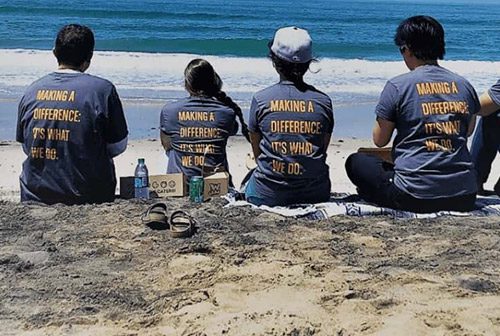

Now that I’ve had 24 hours to decompress from Coastkeeper’s Inaugural Legislative Summit on the “State of Water in San Diego,” it’s time to do a brief (for me!) debrief of the event. First, a huge thanks to our Co-Chairs Senator Kehoe and Assemblymember Fletcher, our many sponsors, elected officials and 100 environmental, business, labor, community and academic leaders who filled the UCSD Faculty Club to discuss the critical issues of the San Diego region’s water future.
I am happy to report that the event was a tremendous success – not only because of the good information shared about water supply options for the region, but more importantly because of the sense from a broad array of stakeholders in the room that we need to work collaboratively to solve our water issues in a way that will also strengthen our economy, provide needed green-collar jobs and enhance local communities.
Also critical was the event’s solution-oriented focus – brainstorming about possible legislation or regulatory approaches to address the region’s water issues. While much work is still needed to flesh out these ideas, many kernels of solutions germinated from our discussions.
First, it was clear from our very first panel on water supply options that agencies are using different cost numbers based on different assumptions, which makes informed decision-making impossible. Legislators discussed directing a statewide independent cost-analysis for various water supply options, such as conservation and efficiency, harvesting, potable and non-potable reclamation, desalination and additional water transfers. Such an assessment is needed so we all – decision-makers and the public alike – have consistent numbers. In fact, this may have been the most important outcome of the summit, as we simply cannot make the best management decisions if we can’t agree on the underlying numbers or assumptions.


Additional ideas centered around an increased local focus on conservation and Low Impact Development projects and pursuing water pricing strategies to incentivize conservation – and disincentivize waste – among consumers (through tiered rate structure) and at the water agency level (through decoupling of water utility revenues from quantity of water delivered so more money is made when less water is used).
Overall, while exhausting for the organizers (us!), it was also energizing to see so many people representing diverse constituencies coming together to delve into an issue that is so critical for our region’s residents and businesses, and for the long-term health and sustainability of San Diego. This is just the beginning of a dialogue, and Coastkeeper remains committed to leading these discussions to develop real solutions for our region.
I will blog more about the summit and its outcomes as a legislative and regulatory agenda are refined and as Coastkeeper continues to develop its vision for water policy in the region. Until then, remember what Michelangelo said, “The greater danger for most of us lies not in setting our aim too high and falling short; but in setting our aim too low, and achieving our mark.”
Let’s aim for a truly water independent and secure region!

















